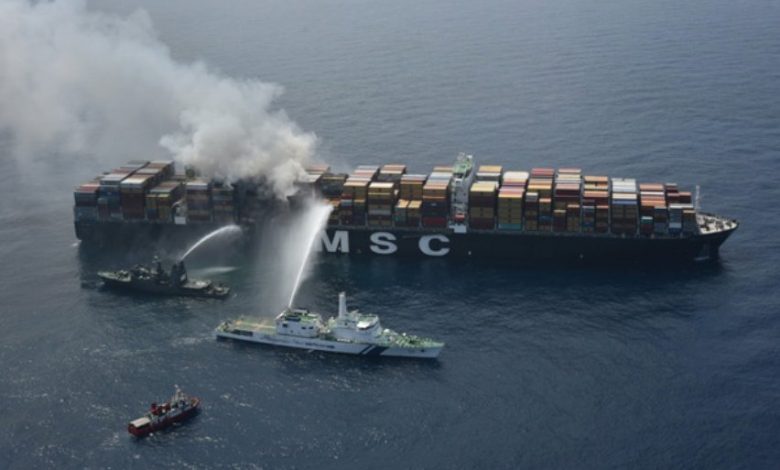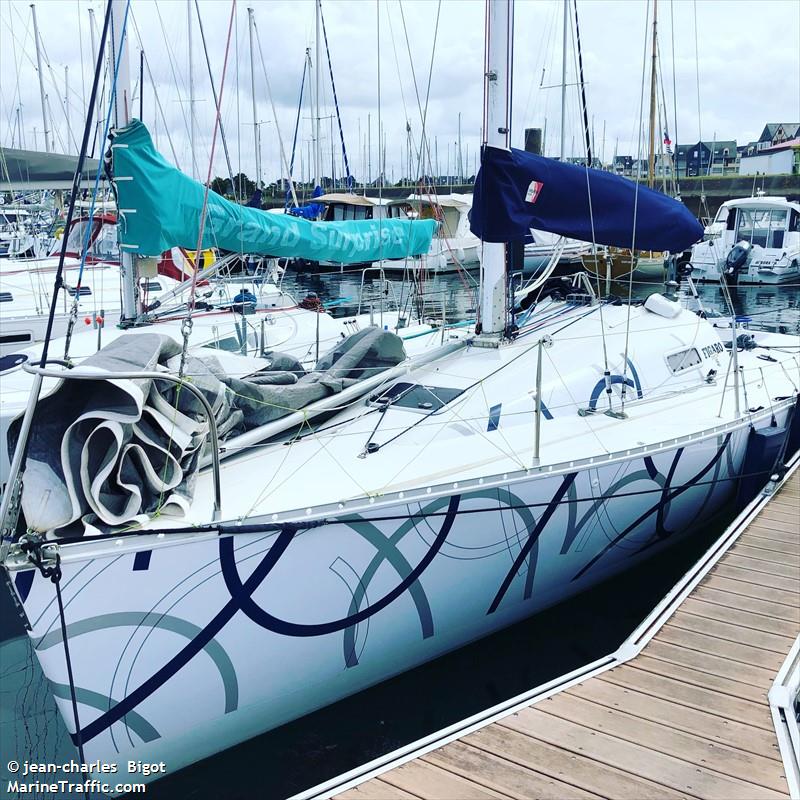Smaller risks, but bigger problems for shipping

Trond Eilertsen and Chris Grieveson from law firm Wikborg Rein on the ‘very modern nightmare’ that was the fire on the giant MSC Daniela boxship.
The recent fire on the MSC Daniela is a perfect example of a very modern nightmare casualty. A major fire on a fully laden giant boxship, although a dominant fear for owners and underwriters, is a daily risk for the crew. Irrespective of volumes of loading manuals, extensive regulations, and seafarer training the first spark of a catastrophic fire may be well down the supply chain.
Almost any means of transportation of cargo and passengers carries an inherent risk of serious casualty. The regulators are doing their best to improve safety requirements, owners train their crew even better, and the insurers stand behind their members in all segments of shipping. As a consequence the numbers of casualties are reducing; the risk of an accident is dropping. But still the human factor is decisive when it comes to land and sea transport. As new cruise ships, bulkers, and box ships increase their carrying capacity in something of a shipping arms-race, the risk may be decreasing but the cost associated with accidents like this grows exponentially.
Bigger ships, greater supply chain risk
The initial suggestion that the fire on the Daniela was caused by misdeclared cargo is very likely to be true. There is as they say ‘ no smoke without fire’. Having been involved in good number of container ship fires representing shipowners and container lines, we have seen many times the sad truth is that, in the overwhelming majority of cases, the fire is traced back to a container which contains undeclared or mis-declared dangerous goods.
A number of times the non-declaration or mis-declaration seems to have been attributable solely to an unwillingness by the shippers to pay a small freight surcharge for shipping dangerous goods. This is often a sum of money as small as $100. Not every mis-declaration means that the cargo will explode, but it inevitably means the carrying line has no idea what is on-board and how to handle a potentially sensitive cargo properly. So heat sensitive cargo may come to be stored next to heated fuel tanks.
In many cases the true shipper of the goods is hard to track down and will turn out to be a small company, freight forwarder, or consolidator of very small size with likely no, or wholly inadequate, insurance to cover the damage their actions have caused. The increasing complexity (more containers…more complexity) of the global supply chain means that regardless of IMO initiatives around dangerous goods, those who make mistakes or take shortcuts can have a vastly disproportionate impact on a business when things go wrong.
Bigger ships, bigger costs
As containerships get larger, the prospects of dealing with a mega ship casualty of even greater magnitude and seriousness than the MSC Daniela becomes increasingly more likely. Even despite the efforts of the Chinese authorities to crackdown on mis-declarations following the Tianjin explosions of August 2015, and their appalling death toll, there seems little sign of this trend disappearing.
There is a real prospect this phenomenon will eventually lead to a major environmental disaster or a total loss of ship with a number of sea farers live put at risk. The increasing costs of casualties (such as the Rena, Costa Concordia, and Deepwater Horizon), show just how expensive maritime accidents are becoming. Big is not necessarily beautiful, and these new mastodons have given rise to new challenges, both operational and legal. While it is impressive to see such a fully loaded container vessel, a serious casualty involving these ships will have major consequences for marine insurance, and consequently all shipowners in mutual P&I clubs. Just think of the costs involved in discharging a fully laden mastodon in a remote (or worse, urban/seafront) area following a grounding or collision. Everyone will end up paying.

 is a perfect example of a very modern nightmare casualty. A major fire on a fully laden giant boxship, although a dominant fear for owners and underwriters, is a daily risk for the crew. Irrespective of volumes of loading manuals, extensive regulations, and seafarer training the first spark of a catastrophic fire may be well down the supply chain.
is a perfect example of a very modern nightmare casualty. A major fire on a fully laden giant boxship, although a dominant fear for owners and underwriters, is a daily risk for the crew. Irrespective of volumes of loading manuals, extensive regulations, and seafarer training the first spark of a catastrophic fire may be well down the supply chain.
In the mid seventy’s on the TRIO service it was the standard practice for the ships command to be able to inspect up to ten per cent of the IMDG cargo loaded at a Port. Due to time constraints this was changed and inspections were carried by a shore representative for each of the individual lines. In general whilst the large commercial shippers of IMDG cargo, manifest and secure there cargo in accordance with the rules and regulations. The problem seems to lie with the one off shipment of IMDG cargo by smaller organizations who due to lack of experience or education do not appreciate the consequences . May be its time that the shipping lines insure that a percentage of all IMDG containers are inspected prior to loading focusing on the one off and less frequent shippers of IMDG cargo. This will not solve all the problems but the idea of spot inspections and the possibility of the cargo or organisation being entered on a Black list by the shipping company’s would certainly help
Whilst it is true to say that the risk cannot ever be totally eliminated I believe that, in respect of this particular issue, it can and should be further and substantially reduced. This is a trend that has been far too prolonged already. Unfortunately it does not attract major headlines outside of the marine industry because the life threat is so low, there is no perception of danger to innocent persons and the industry is effectively regarded as self-policing.
As has been stated in the main article, regulations, codes, guides and training are already reasonable so what more can be done?
Policing, as mentioned by Roy, would have an effect but policing must be internationally consistent and result in substantial and published punitive action. Where lives are lost that should include the shadow of Corporate Manslaughter. The biggest deterrents lie in the pocket or liberty.
Technology can also be much enhanced to provide monitoring, early detection and warning not only in the hold but in the container. However, in this uneven playing field it would need to be mandatory. Appropriate technologies exist in other industries for robust, compact and reliable wire-free detection of heat, smoke, carbon monoxide, O2 depletion, movement-triggered cctv (including audio) and combinations. Cost effective application to the marine environment can be achieved if a market can be found for it.
One other methodology is for the marine industry, like the car industry, to move toward an emphasis on marketing safety and reliability over price. At present only the larger players have this luxury. Some have banned certain cargoes. The clear attraction for their clients is that containers of innocent goods will not be affected by the carelessness of others. This is worth a little extra premium. The ship owner increases reputation and other shippers will not get that business unless they follow suit.
One problem with advances in safety is that it often results in complacency. Apparent solutions can have knock-on effects that must be fully evaluated. Including effects on business viability. Ownership of safety by all staff and crew can become routine with good training including reward (and punishment) regimes. This is already the case in high risk sectors. Why should any ship be different?
Most importantly, in my view, a suitable and sufficient risk assessment is dynamic and continuous. It not a document that should be shelved and reviewed a few years later. There is still only one ultimate fire exit from a ship at sea so prevention, early detection and fast response will always be key. And in that order!!!